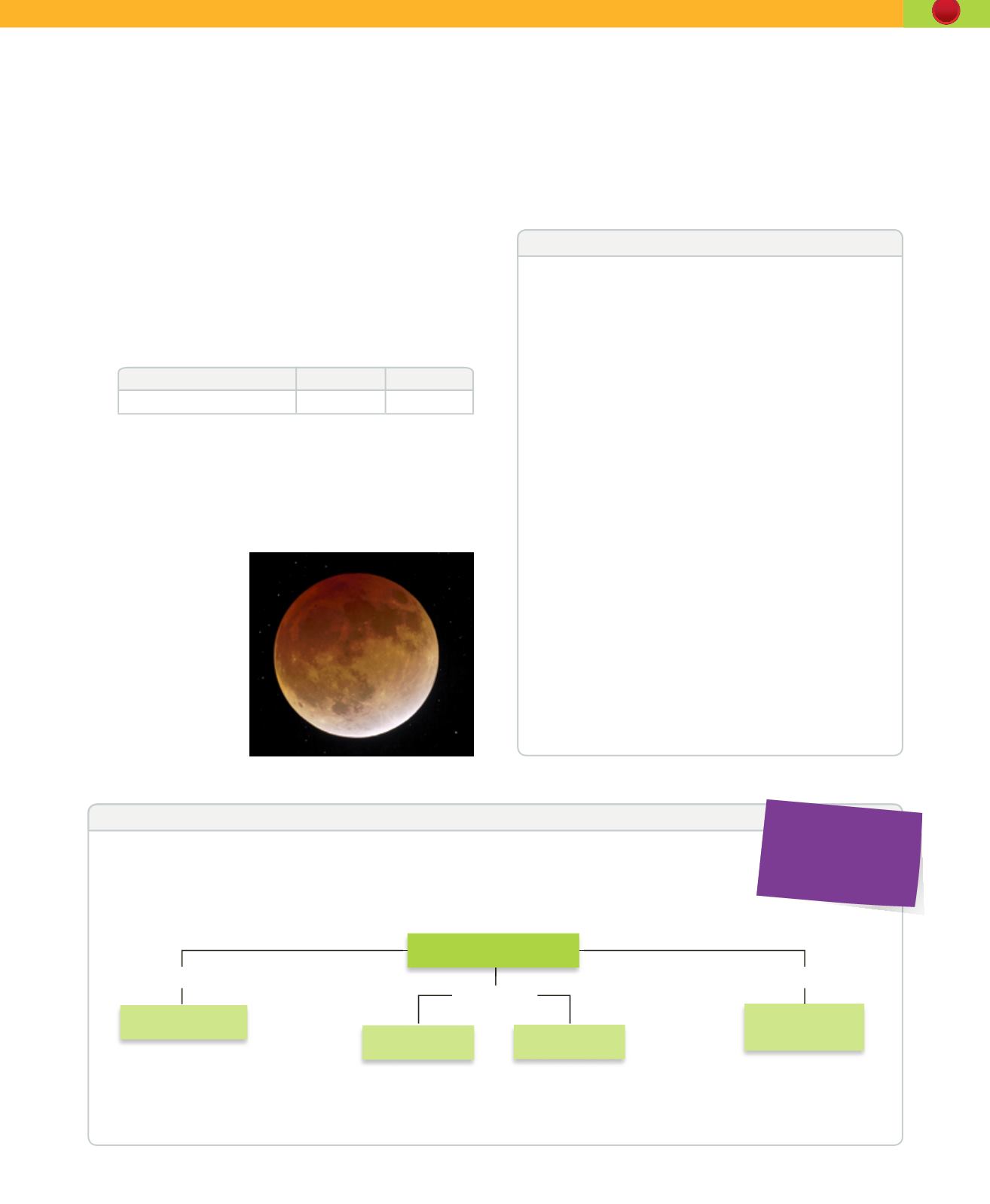
41
2. The Earth in the Universe
www
The Sun, Earth and Moon
50.
Why do we always see the same side of the Moon
from the Earth?
51.
Draw a diagramof a solar eclipse and a lunar eclipse.
Label the Sun, the Earth and the Moon.
52.
If the Moon moves around the Earth at a speed of
3700 km/h, howmany kilometres is its movement of
revolution?
53.
In your notebook, complete the following table
with the phases of the moon. Indicate the type of
eclipse (total or partial) and tides (spring or neap)
that can occur during each phase.
Phases of the Moon Eclipses
Tides
...
...
...
54.
Knowing that the tides dependon the Sun-Earth-Moon
alignment and the proximity of the three bodies,
answer the following question: When do you think
a very high tide is created, in the spring tides of the
spring solstice or in the spring tides of the winter
solstice?
55.
Find out and
explain why the
Moon appears to
be red during a
lunar eclipse.
56.
Find information about annular eclipses and answer
the following questions:
a)
Do they occur during solar eclipses, lunar eclipses or
both?
b)
Why are they called annular eclipses?
c)
Draw a diagram of an annular eclipse.
STUDY SKILLS
❚
Create your own summary of the unit using
the
Key concepts
. Add any other important
information.
❚
Copy the following diagram in your
notebook and add the missing information
to create a conceptual map of the unit.
The origin of the Moon
It’s not clear how the Moon came to orbit our
planet. It could be that, passing near our planet, the
gravitational pull converted it into a satellite. Perhaps
they both formed at the same time in the primitive
Solar System. Or it could be the result of a collision
between proto-Earth and another gigantic object
whose remains joined together after the collision, to
form the Moon. The last theory is the most accepted.
Some German scientists have analysed rocks brought
back by astronauts from the Apollo programme, in
which they found chemical remains of something
different from the Earth, which must have been the
big object involved in the collision.
Alicia
R
IVERA
E
L
P
AÍS
, J
UNE
2014
(Translated and adapted)
a)
What is the text about?
b)
What does proto-Earth mean?
c)
How do you think the Moon originated?
d)
What recent discoveries support your previous
answer?
e)
The Moon is the Earth’s only natural satellite, but
there are also artificial satellites. Find out about
them and explain their origin and use.
READ AND UNDERSTAND SCIENCE
You can record your
summary and listen
to it as many times
as you like to revise.
❚
Create your own scientific glossary. Define the following terms:
eclipse
,
ecliptic
,
equinox
,
star
,
galaxy
,
interstellar gas
,
gravity
,
tides
,
ation
,
nebula perigee
,
interstellar dust
and
solstice
. Add any other terms you consider important.
is located in the
interacts with
the Moon and
the Sun
The Earth
moves by
revolution
rotation
The Solar System


